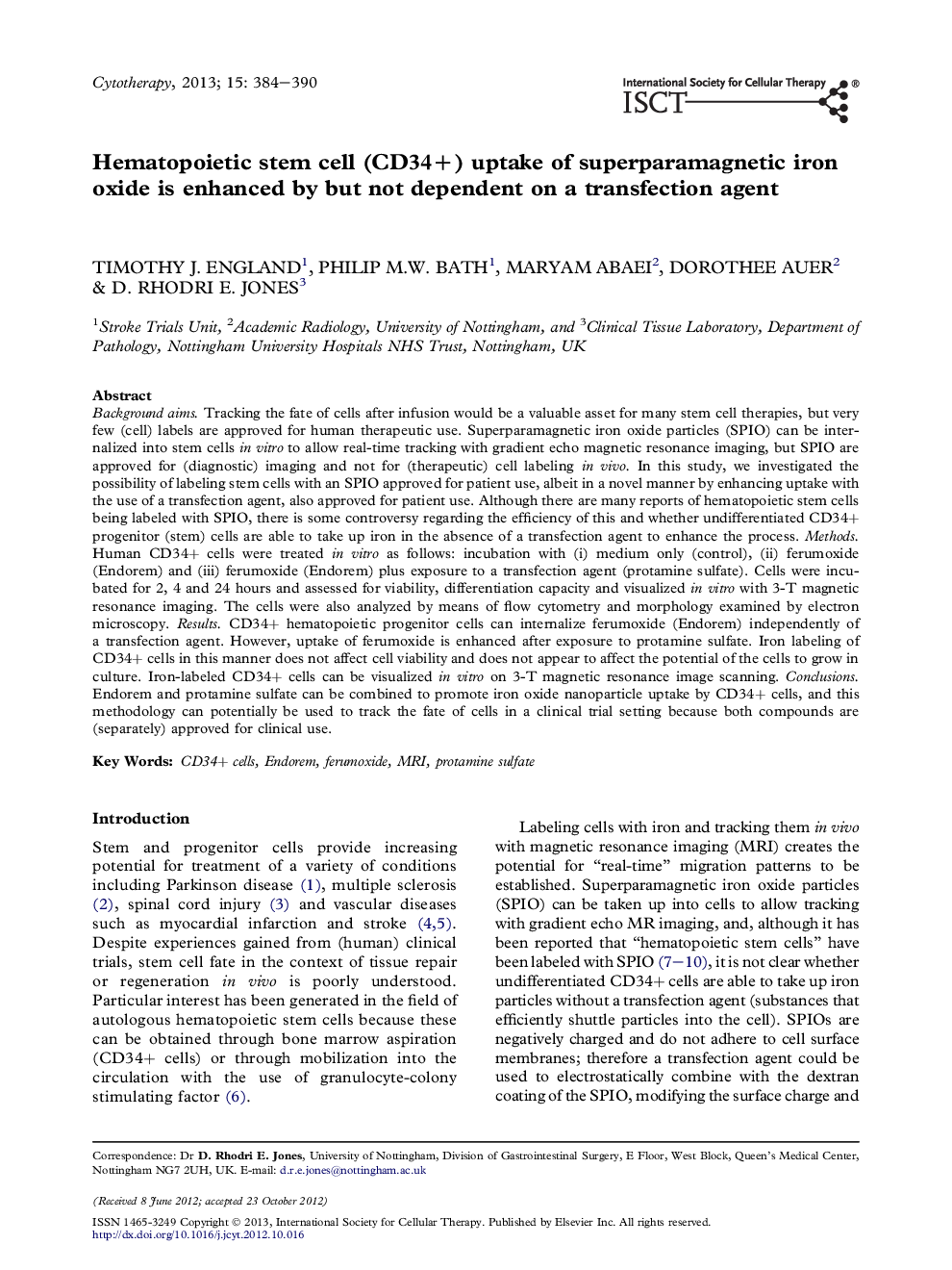| Article ID | Journal | Published Year | Pages | File Type |
|---|---|---|---|---|
| 2171863 | Cytotherapy | 2013 | 7 Pages |
Background aimsTracking the fate of cells after infusion would be a valuable asset for many stem cell therapies, but very few (cell) labels are approved for human therapeutic use. Superparamagnetic iron oxide particles (SPIO) can be internalized into stem cells in vitro to allow real-time tracking with gradient echo magnetic resonance imaging, but SPIO are approved for (diagnostic) imaging and not for (therapeutic) cell labeling in vivo. In this study, we investigated the possibility of labeling stem cells with an SPIO approved for patient use, albeit in a novel manner by enhancing uptake with the use of a transfection agent, also approved for patient use. Although there are many reports of hematopoietic stem cells being labeled with SPIO, there is some controversy regarding the efficiency of this and whether undifferentiated CD34+ progenitor (stem) cells are able to take up iron in the absence of a transfection agent to enhance the process.MethodsHuman CD34+ cells were treated in vitro as follows: incubation with (i) medium only (control), (ii) ferumoxide (Endorem) and (iii) ferumoxide (Endorem) plus exposure to a transfection agent (protamine sulfate). Cells were incubated for 2, 4 and 24 hours and assessed for viability, differentiation capacity and visualized in vitro with 3-T magnetic resonance imaging. The cells were also analyzed by means of flow cytometry and morphology examined by electron microscopy.ResultsCD34+ hematopoietic progenitor cells can internalize ferumoxide (Endorem) independently of a transfection agent. However, uptake of ferumoxide is enhanced after exposure to protamine sulfate. Iron labeling of CD34+ cells in this manner does not affect cell viability and does not appear to affect the potential of the cells to grow in culture. Iron-labeled CD34+ cells can be visualized in vitro on 3-T magnetic resonance image scanning.ConclusionsEndorem and protamine sulfate can be combined to promote iron oxide nanoparticle uptake by CD34+ cells, and this methodology can potentially be used to track the fate of cells in a clinical trial setting because both compounds are (separately) approved for clinical use.
